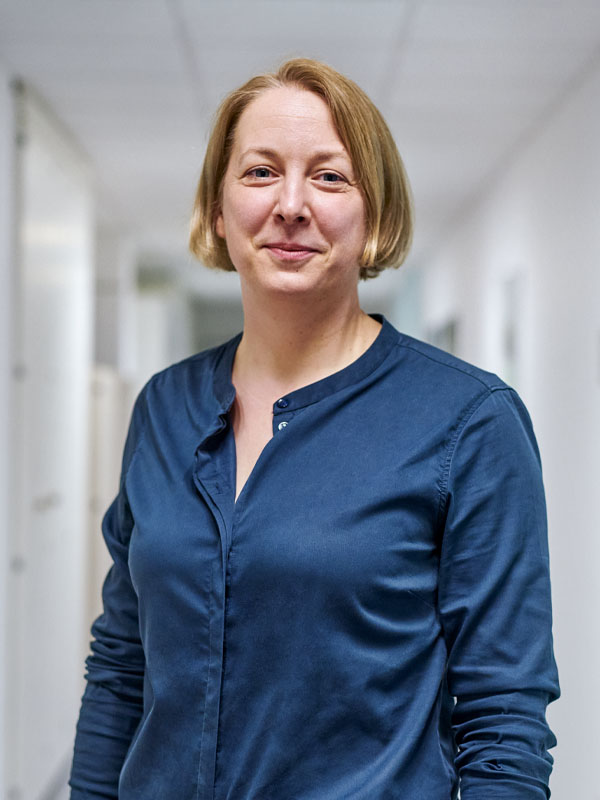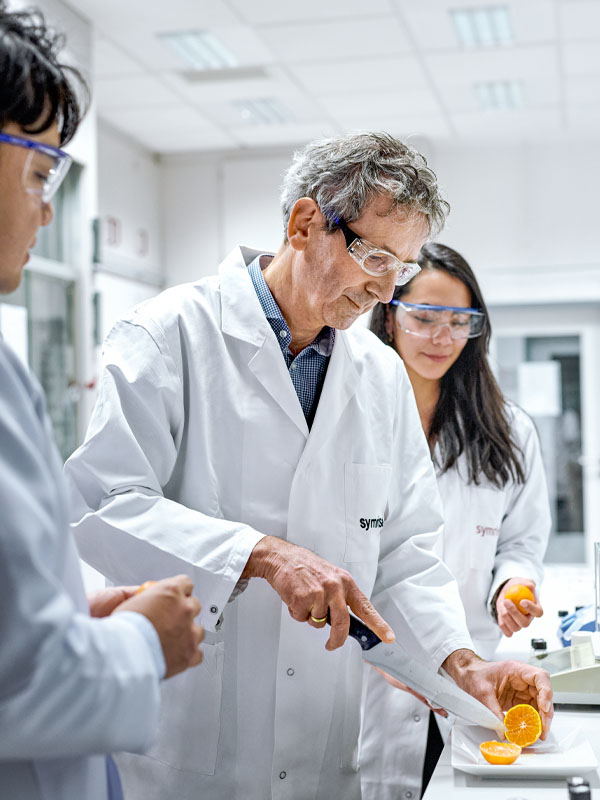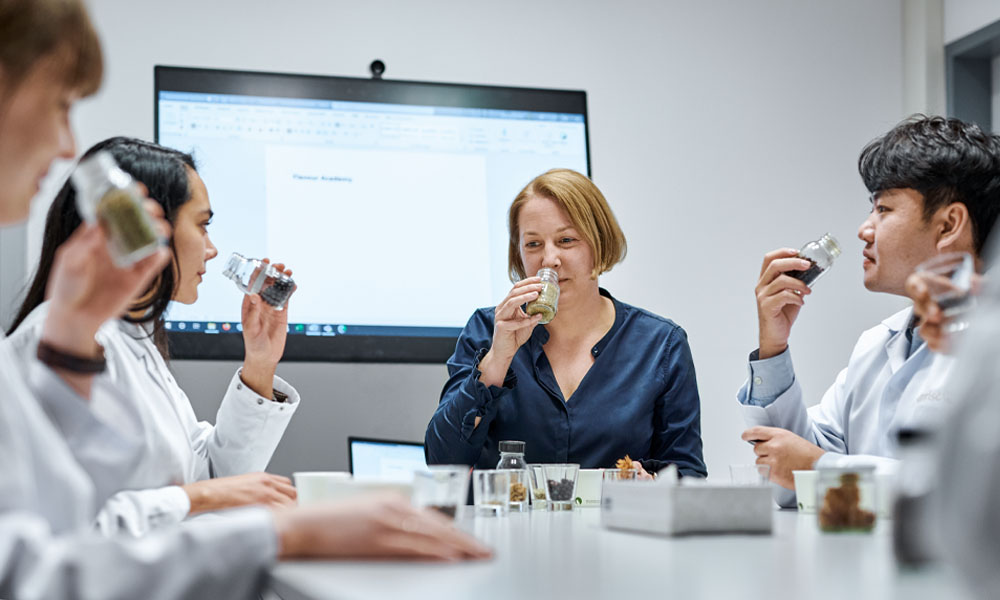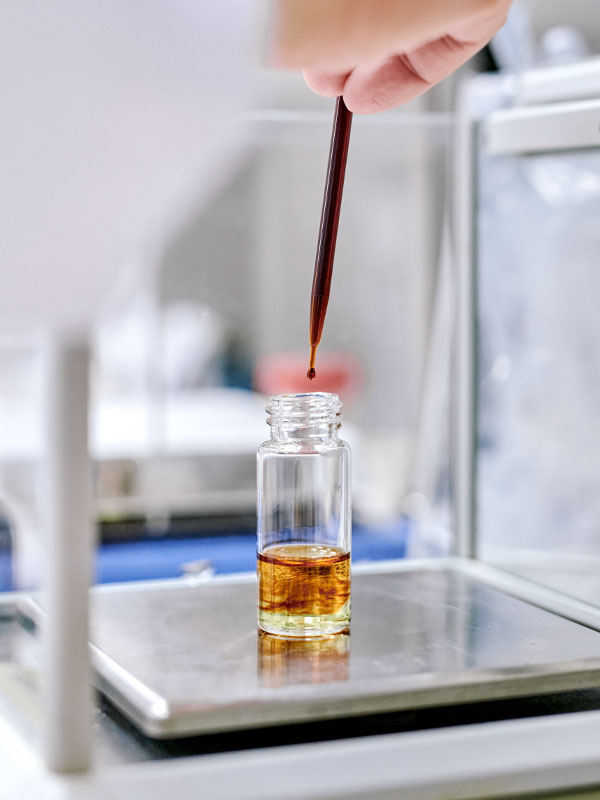Training for young talents
The exercise is intended to show the students, all with completed professional studies, how complex flavors are. “They get to know 500 different ingredients in the Flavor Academy that they must be able to recognize and use in compositions,” describes Master Flavorist Thomas Riess, who has worked in the company for 30 years. Alongside 30 to 40 other experienced colleagues, he guides and teaches the five trainee flavorists. The team provides a broad training program, from flavorist profession to application, regulatory expertise and presentation techniques to glimpses into production.
Dr. Katharina Reichelt, who has participated in the training program almost 10 years ago, also leads the Academy alongside the group of research flavorists. “The school has existed for 15 years. Previously, flavorists were trained on the job,” explains the graduated nutrition scientist about the Academy’s beginnings. As Symrise grew globally, it became clear that it would make sense to create an aligned, bundled flavorist training program for the Taste, Nutrition & Health segment. “With the Flavor Academy, part of the Food & Beverage division, we can transfer the same level of knowledge across all global locations and promote exchange with the main office in Holzminden and also between the other locations.” According to Katharina Reichelt, around 20 candidates every year either apply for the program or are referred to the training by their managers.




